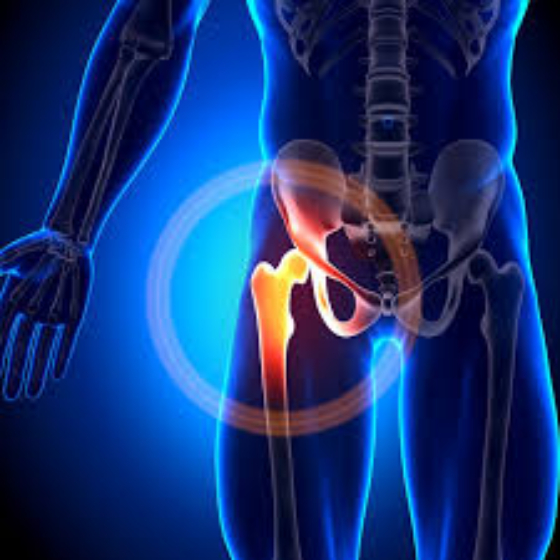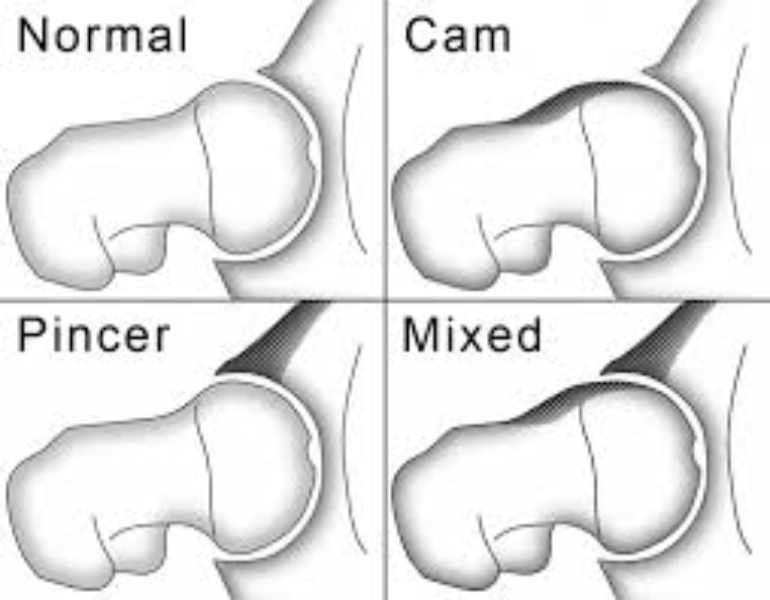Do you require any assistance? Simply reserve your appointment online below
Femoral acetabular impingement
Don’t let pain stop you
Femoral acetabular impingement (FAI) also known as hip impingement is a condition in which extra bone grows along one or both of the bones that form the hip joint — giving the bones an irregular shape. Because they do not fit together perfectly, the bones rub against each other during movement.
In FAI, bone overgrowth — called bone spurs — develop around the femoral head or along the acetabulum causing abnormal contact between the hip bones, and prevents them from moving smoothly during activity.
Over time, this can result in tears of the labrum and breakdown of articular cartilage (osteoarthritis).

Types of Femoral Acetabular impingement

There are various types of femoral acetabular impingement. Below are some of the common types that we see
Pincer is a type of impingement that occurs because extra bone extends out over the normal rim of the acetabulum.
Cam impingement is whereby the femoral head is not round and cannot rotate smoothly inside the acetabulum. A bump forms on the edge of the femoral head that grinds the cartilage inside the acetabulum.
Combined impingement means that both the pincer and cam types are present.
Causes of femoral Acetabular impingement
The extra bone that leads to impingement is often the result of normal bone growth and development.
Cam-type impingement is when such development leads to the bump of bone on the femoral head and/or neck.
Normal development can also result in the overgrowth of the acetabular rim, or pincer-type impingement.
Hip trauma (falling on one’s hip) can also lead to impingement.
The tears of the labrum and/or cartilage are often the result of athletic activities that involve repetitive pivoting movements or repetitive hip flexion.
Symptoms of Femoral Acetabular Impingement
Pain often occurs in the groin area, although it may occur toward the outside of the hip. Turning, twisting, and squatting may cause a sharp, stabbing pain.
Stiffness and limping are also common symptoms of FAI.

Diagnosing Femoral Acetabular Impingement

As part of the physical examination, your doctor will likely conduct the impingement test. For this test, your doctor will bring your knee up towards your chest and then rotate it inward towards your opposite shoulder. If this recreates your hip pain, the test result is positive for impingement
X-rays and magnetic resonance imaging (MRI) are crucial for diagnosing femoroacetabular impingement.
X-ray can reveal an excess of bone on the femoral head or neck, and on the acetabular rim. An MRI can reveal fraying or tears of the cartilage and labrum.
Treatment of Femoral Acetabular Impingement
Treatment of FAI begins with conservative, non-surgical techniques such as rest, activity modifications, careful use of anti-inflammatory medications, and a course of physical therapy to help alleviate the symptoms.
An injection of the hip joint with anesthetic can also provide some relief as well as diagnostic information in patients with symptoms which are unresponsive to treatment.
When surgery is necessary, FAI is treated with hip arthroscopy to remove the abnormal bone and stabilize the cartilage and/or labrum.
The procedure is performed using several small incisions through which an arthroscope, or miniature camera, and instruments are inserted into the joint.
